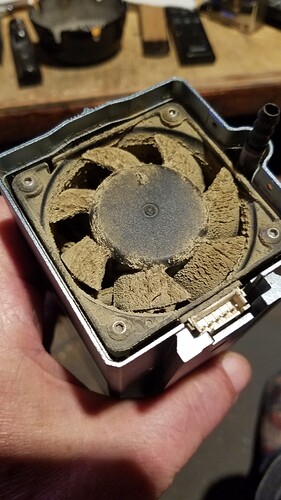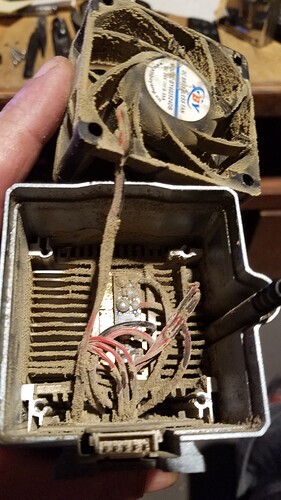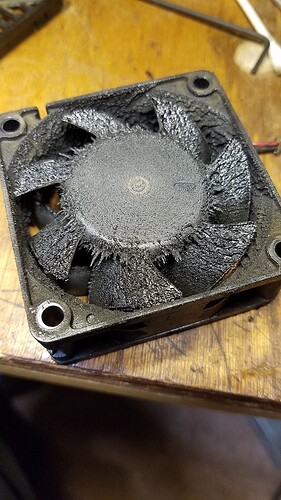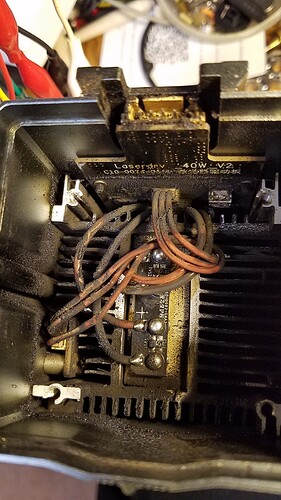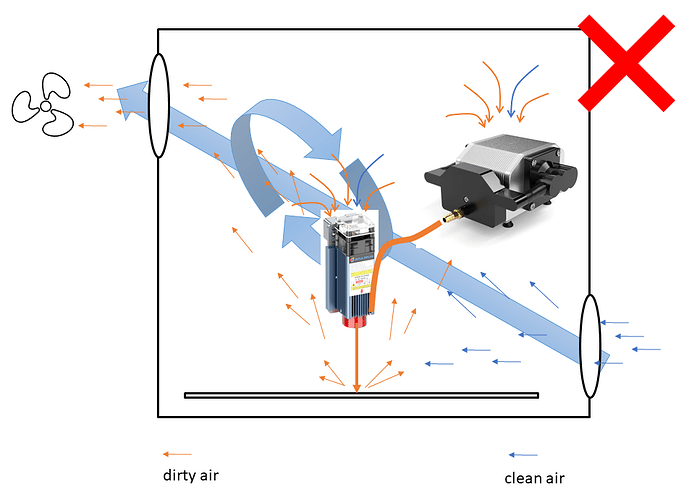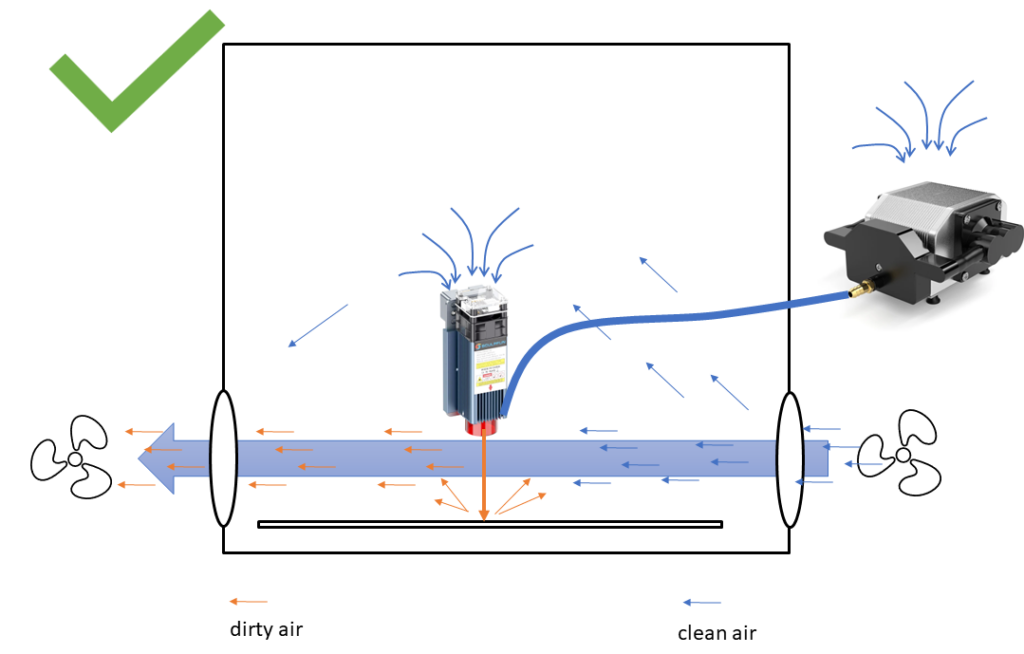How do I protect the Diode module from this?
Air assist ON
Cross vent airflow
Good exhaust air flow
Good inlet air flow
Clean your engraving enclosure environment
Thanks. My exhaust fan probably not strong enough.
Be sure to have adequate inlet for air flow.
-AND-
Clean the enclosure more often. If the laser is sitting in a dusty and dirty pocket of air, the circulated polluted air will get the laser dirtier than need be.
Hi.
Quite a dustbunny farm You have going on there ![]() .
.
Reminds me of this:
MI equipment related forum thread of mine from a while back.
After cleaning pics on post #45.
That kind of dustbunny farming is unfortunately very common with any electrical appliance that uses fan assisted cooling, and has to be taken care of before problems occur.
And prevented from happening beforehand if possible.
The electronics on laser heads are much, much more delicate and more heat sensitive than for example the PA amps on that thread, so dust control is very important.
The rough schematic @misken posted is a very informative one.
The particle handling can be improved if the filtered supply/make up air comes from the top side opposite to the exhaust.
And if cutting, an added exhaust under the workpiece improves things also considerably.
On certain applications, a separate clean supply air duct can be routed directly to the laser head if required.
Anything attached to the head will obviously increase inertia, so that must be kept in mind as well.
The exhaust air volume has to be greater (if there’s harmful gasses/particles) or at least equal to the air assist volume, and also equal or greater of the supply air volume if one doesn’t rely on make up air cutout(s) only.
The long and spiky particle attraction pattern on that pic looks suspiciously like ferromagnetic particles on a magnet, and that’s obviously a really bad thing around any PCB’s.
If the fan spins very slowly, it is possible that those are just static elecricity particle patterns, but I for one would be very tempted to test the particles.
If those particles are indeed ferromagnetic, I would like to find out where they came from, and eliminate that from happening somehow.
Regards,
Sam
![]()
Yes sir!
The issue is that when condensation forms, which is often ,you have a conductor where you dont want one .
Thank you very much for your advice.
Looks like I have to reconfigure exhaust system.
Michael.
Hi.
You’re welcome ![]() .
.
Regards,
Sam
![]()
